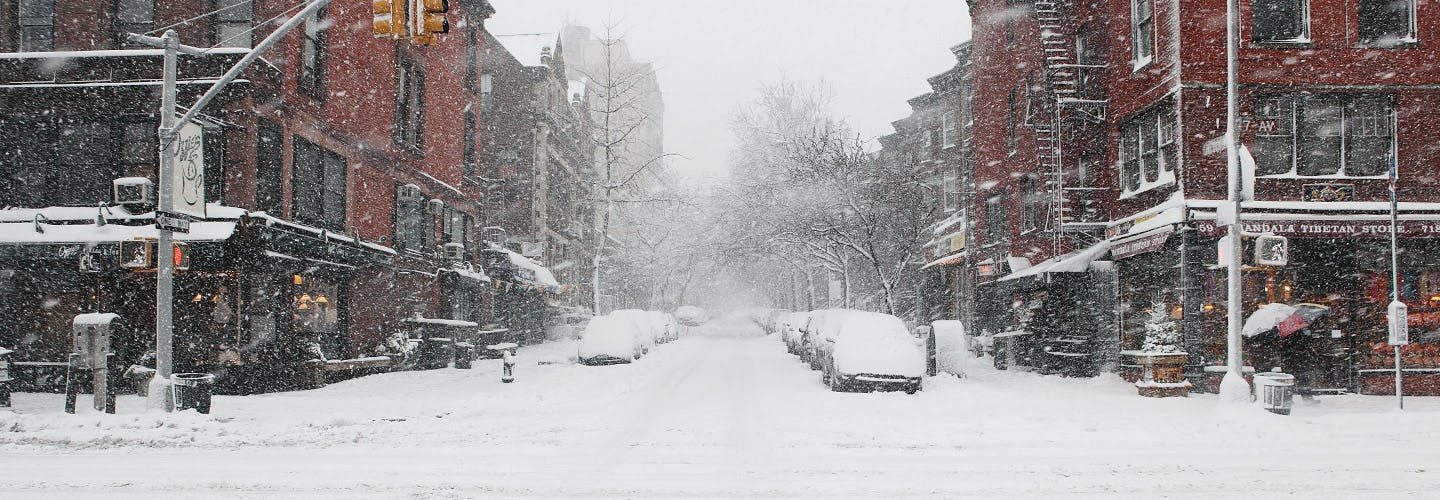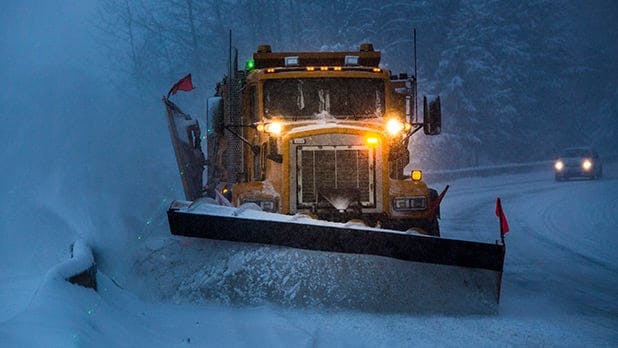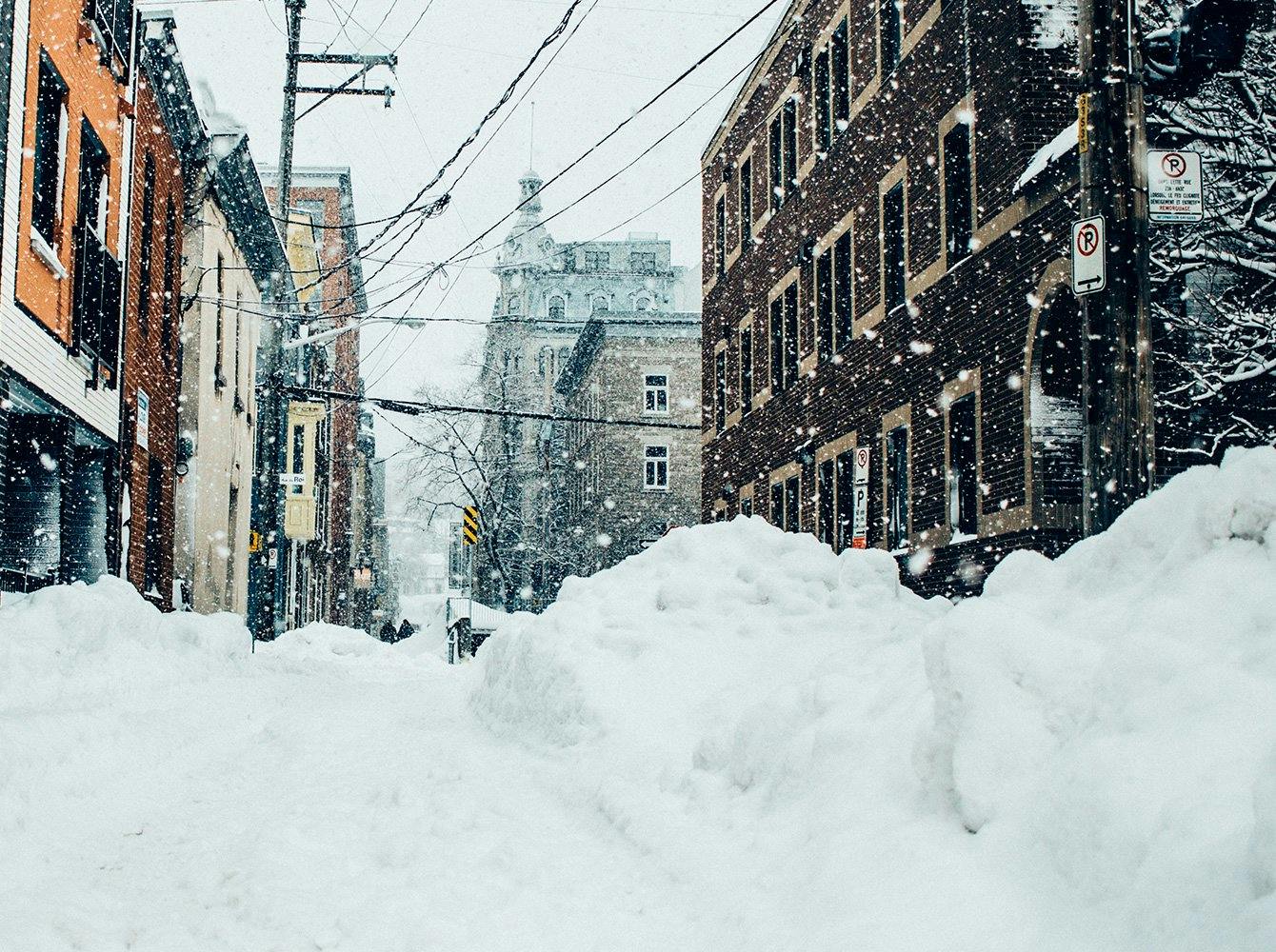The harshest winter cities in the US
- Crisis management
- Planning ahead
- Auto insurance
- Homeowners insurance

What defines the harshest winter weather cities in the U.S.? From bone-chilling temperatures to snowdrifts that seem to defy gravity, some urban landscapes can feel more like frozen tundras during the colder months.
The cities featured here have earned their reputation through consistently tough winters that test even the hardiest residents. While surviving winter in one of these harsh winter cities might seem daunting, there are strategies to brace yourself for the cold onslaught. From home insulation to prepping your vehicle to weather the storm, proactive measures can make a significant difference.
Factors that make a city bad for winter
Navigating these harshest winter cities demands an understanding of the elements that make them so notoriously difficult. There’s more to it than a mere drop in temperature – a number of elements contribute to the winter experiences in these cities.
Cold temperatures
It's more than sweater weather; it's a cold that seeps into your core. Cities notorious for their winter woes often experience prolonged periods of literally freezing temperatures, which can make going outside a test of endurance.
Snowfall
Snow is delightful in small quantities. It can even be beautiful after a storm when the city is blanketed in white. However, heavy snowfall that lingers disrupts daily life, straining infrastructure and reducing mobility.
Wind
Freezing temperatures combined with relentless gusts of wind is a recipe for discomfort. Unforgiving winds not only intensify the cold but also make navigating the outdoors a daunting task.
Ice
In these cities, sidewalks can become ice patches and roads turn into slippery slides. These icy surfaces heighten the risk of accidents and injuries for pedestrians and drivers alike.
Gray skies
Winter months can leave cities gray for days or weeks on end. This lack of sunlight can impact moods and energy levels, adding psychological difficulty to the physical challenges.
Air pollution
Winter air traps pollutants close to the ground, reducing the air quality. The combination of cold weather and pollution can cause respiratory issues.
Cost of living
The financial toll of winter extends beyond heating bills. Higher costs for winter gear, increased energy consumption and seasonal employment fluctuations contribute to the strain.
Public transportation
Inadequate or unreliable public transit systems during winter may lead to delays and frustrations for residents trying to get around.
Infrastructure
Cities ill-equipped to handle the snow and ice struggle to maintain functional infrastructure. Overwhelmed road crews and inadequate snow removal equipment compound the challenges.
These factors combine to create a perfect storm of winter woes, leaving residents battling not just the elements but also the systemic challenges that come with surviving the cold season.
Ready for a fresh perspective?
Imagine expert advice, instant insurance quotes and all your policies, all in one place.
The harshest winter cities in the US
The answer to this one depends on who you ask. Are you going by number of auto insurance claims? Homeowners? Are you thinking about precipitation or temperature? Do you include wind chill in your temperature comparisons? Average temperatures or records?
Which is to say, it’s really impossible to have a truly objective ranking. There are some commonalities among the harshest winter cities that we used in compiling this list though. Obviously cold temperatures and precipitation were a factor. As was proximity to water, wind patterns and number of daylight hours. Apologies to Phoenix.
Anchorage, Alaska
Anchorage, nestled within Alaska's vast wilderness, has a winter defined by extreme conditions that test the limits of human endurance. The city's high latitude leads to extended periods of darkness during the winter months, contributing to seasonal affective disorder for some residents. Subzero temperatures keep the city frosty for months. Heavy snowfall further compounds the challenges. Residents navigate through the cold and darkness, seeking solace in the moments of fleeting daylight while bracing themselves against the unrelenting winter chill.
Boston, Massachusetts
Boston faces a challenging winter characterized by heavy snowfall and freezing temperatures. Situated along the Atlantic coast, the city experiences nor'easters—powerful winter storms originating in the northeastern U.S. These storms bring significant snow accumulation, often paralyzing the city with snow-covered streets and disrupted transportation. Biting winds off the ocean exacerbate the cold, making it feel even harsher.
Buffalo, New York
Buffalo, situated near Lake Erie, experiences an unparalleled onslaught of lake-effect snowstorms. These weather phenomena, born from the interaction of cold air and moisture-laden winds off the lake, bring an onslaught of snow upon the city. Buffalo's geographical alignment intensifies these storms, resulting in relentless snow accumulation that blankets the landscape.
Chicago, Illinois
Chicago also faces a winter full of lake-effect snowstorms, that are capable of burying the city under rapid and substantial snow accumulation. However, it's not just the snow that defines Chicago's winters; it's the relentless gusts of wind that slice through the urban canyons, intensifying the cold to bone-chilling levels. The notorious "Windy City" earns its moniker as gusty winds make walking outside into a battle against the elements.
Denver, Colorado
Denver encounters challenging winter weather due to its high elevation and proximity to the Rocky Mountains. While known for its sunshine, the city also experiences heavy snowfall during winter months. Snowstorms originating in the mountains can quickly blanket Denver in inches of snow, impacting travel and daily routines. The city's elevation amplifies the cold, leading to sharp drops in temperature.
Detroit, Michigan
Detroit battles harsh winter conditions marked by heavy snowfall and bitterly cold temperatures. Snowfall blankets the city, making commuting and outdoor activities challenging. The Motor City's winters are further intensified by Arctic air masses that sweep through the region, plunging temperatures well below freezing for extended periods. Winds add to the chill factor, creating conditions that test the resilience of its residents.
Minneapolis, Minnesota
Minneapolis, positioned in the northern reaches of the United States, finds itself at the mercy of Arctic air masses that cause prolonged periods of freezing temperatures. These temperatures combined with substantial snowfall, leads to a season of extended frigidity, where frosty breaths freeze in the air and layers upon layers become a prerequisite for survival.
Salt Lake City, Utah
Salt Lake City grapples with winter challenges arising from its unique geographical setting. Surrounded by mountains, the city experiences snowstorms generated by the Great Salt Lake and the nearby Wasatch Range. Heavy snowfall and icy conditions pose difficulties for commuters and outdoor activities. The city's location in a valley contributes to temperature inversions, trapping cold air and pollutants, impacting air quality during winter.
Some cities’ winters can take you by surprise. Here’s our list of honorable mention cities. They may not the first ones you think of when you think of harsh winters, but they can take you by surprise.
Asheville, North Carolina
Nestled in the Blue Ridge Mountains, Asheville sees an average of a foot of yearly winter snow and cold snaps that disrupt routines and local infrastructure.
Atlanta, Georgia
Atlanta's mild reputation hides its occasional severe winter storms, which cause traffic chaos and halt daily life with even modest snowfall.
Las Vegas, Nevada
Despite its desert climate, Las Vegas sees rare but impactful winter storms, bringing unexpected snowfall and cold snaps to the city.
Portland, Oregon
Portland encounters occasional winter storms causing transportation issues due to limited snow preparation.
Seattle, Washington
Despite its rainy image, Seattle can face unexpected freezing temperatures and sporadic snow, challenging its unprepared infrastructure.
How to prepare for winter in a harsh winter city
Winter in unforgiving cities demands strategic preparation to navigate the biting cold and treacherous conditions. Consider these practical steps to brace yourself for the challenges ahead:
Prep policies
Winters in these harsh cities can lead to a lot of insurance claims. For your homeowners insurance, check if your policy covers:
- Other structure coverage – This coverage is for structures in your yard that are not attached to your house. Think: fences and sheds.
- Personal property coverage – Make sure that you have sufficient coverage for all of your possessions. This is especially important if you haven’t reviewed your coverage amounts recently.
- Loss of use coverage – If the weather is bad enough and your home becomes unlivable due to storm damage, this can cover a hotel and sometimes food.
It’s worth considering your auto insurance as well. A comprehensive policy will provide coverage for weather-related damage. You might also be interested in loan payoff insurance or gap insurance to protect yourself against financial damages from an accident if you still owe money on your vehicle. There are a few car insurance add-on options that can be beneficial in the winter.
Layered looks
Layers aren’t just cute, they’re necessary to keep the cold at bay. Think: thermal undergarments, insulating sweaters and a waterproof jacket. Don't forget a cozy hat and gloves to protect exposed extremities.
Footwear fit for the freeze
Equip yourself with footwear that defies icy sidewalks. Sturdy boots with reliable traction will be your trusty companions as you traverse the snow-covered paths.
Arm autos
Prep your vehicle before you get stuck and hope you never need to use those supplies. Stock it with essentials like a snow shovel, ice scraper and a thick blanket. These supplies can be a saving grace when faced with unexpected snowstorms.
Postpone passage
Before venturing out, check the forecast. If the weather turns harsh, consider postponing non-essential travel. Safety trumps all during winter's wrath.
Take temperature time outs
When braving the elements, take periodic breaks indoors to thaw frozen fingers and toes. Shield yourself from frostbite by seeking refuge in heated spaces.
Check on chilly companions
Check in on vulnerable neighbors, especially the elderly, to make sure they're coping well with the harsh conditions. A simple gesture can make a significant difference in their safety and well-being.
Whether your area made the list or not, it’s important to note your location-specific insurance considerations. By arming yourself with these preparations and extending care to those around you, you're not just weathering the storm; you're fostering a resilient community in the face of winter's trials.
A panoramic outlook on
all things insurance
The VIU Point is here to help you make sense of it all, so you can confidently compare auto insurance quotes and make the best policy decisions.


